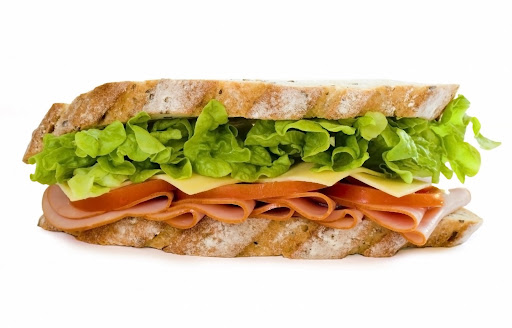It is possible to lower blood pressure by applying the following tips:
- Eat lots of fruits and vegetables;
- Limit consumption of salt: studies show that 30% of hypertensive patients (especially those that react readily with sodium) can control their blood pressure by reducing their intake of sel11. If necessary, for cooking or seasoning, replace table salt, sea salt or fleur de sel salt by potassium.
- Moderate consumption of alcohol and caffeine (up to four cups of coffee per day);
- Increase its intake of omega-3 of marine origin, mainly found in mackerel, salmon, trout, herring and cod;
- Eat garlic: although its virtues are not rigorously proven, many doctors recommend garlic for its vasodilatory properties (see Complementary).
The DASH diet
In the United States, the National Institutes of Health (NIH) recommend the DASH diet (Dietary Approaches to Stop Hypertension). This diet is specially designed to treat hypertension. It is akin to the Mediterranean diet. Research has demonstrated its effectiveness and, in the case of mild hypertension, it can even replace the usual medicines. Regular monitoring of the diet can reduce systolic blood pressure by 8 mmHg to 14 mmHg, and diastolic blood pressure of 2 mmHg to 5.5 mmHg9.
In this scheme, the emphasis is on fruits and vegetables, whole grains, nuts, fish, poultry and dairy products low in fat. The consumption of red meat, sugar, fat (especially saturated fat) and salt is réduite2, 10.

The DASH diet
Servings per day
Examples of portion
Grain Products
7 to 8
- 1 slice of whole grain bread
- 125 ml or 1 / 2 cup of dry cereal with whole grains
- 125 ml or 1 / 2 cup of brown rice, pasta or grains
Vegetables
4 to 5
- 250 ml of lettuce or other leafy
- 125 ml or 1 / 2 cup vegetables
- 200 ml or 3 / 4 cup vegetable juice
Fruits
4 to 5
- 1 medium fruit
- 125 ml or 1 / 2 cup of fresh fruit, frozen or canned
- 200 ml or 3 / 4 cup juice
- 60 ml or 1 / 4 cup dried fruit
Lower-fat dairy products
2 to 3
- 250 ml or 1 cup of skim milk or 1%
- 250 ml or 1 cup of skim yogurt
- 50 g or 1 1 / 2 ounces of cheese, partially skimmed or skimmed
Meat, poultry and fish
2 or less
- 90 g or 3 ounces of lean meat, poultry, fish or seafood
Fat
2 to 3
- 5 ml or 1 c. Tea oil or margarine
- 5 ml or 1 c. Tea regular mayonnaise
- 15 ml or 1 c. tablespoons reduced-fat mayonnaise
- 15 ml or 1 c. tablespoon regular salad dressing
- 30 ml or 2 tablespoons low-calorie dressing
Legumes, nuts and seeds
4 to 5 per week
- 125 ml or 1 / 4 cup cooked legumes
- 85 ml or 1 / 3 cup nuts
- 30 ml or 2 tablespoons sunflower seeds
Snacks and sweets
5 per week
- 1 medium fruit
- 250 ml or 1 cup yogurt
- 125 ml or ½ cup frozen yogurt
- 200 ml or 3 / 4 cup pretzels
- 125 ml or ½ cup of fruit gelatin
- 15 ml or 1 c. tablespoons maple syrup, sugar or jam
- 3 hard candies






0 comments:
Post a Comment